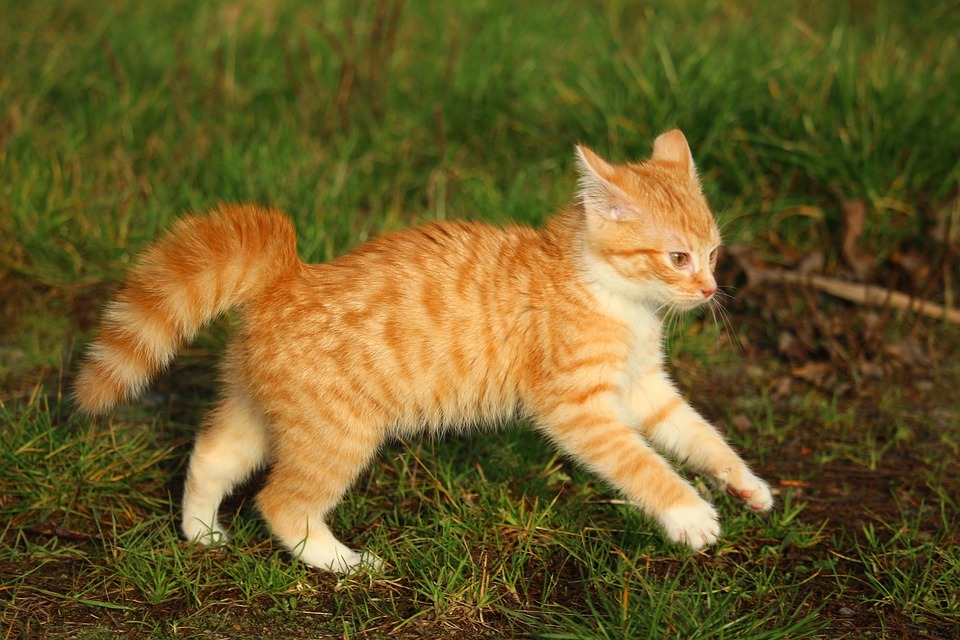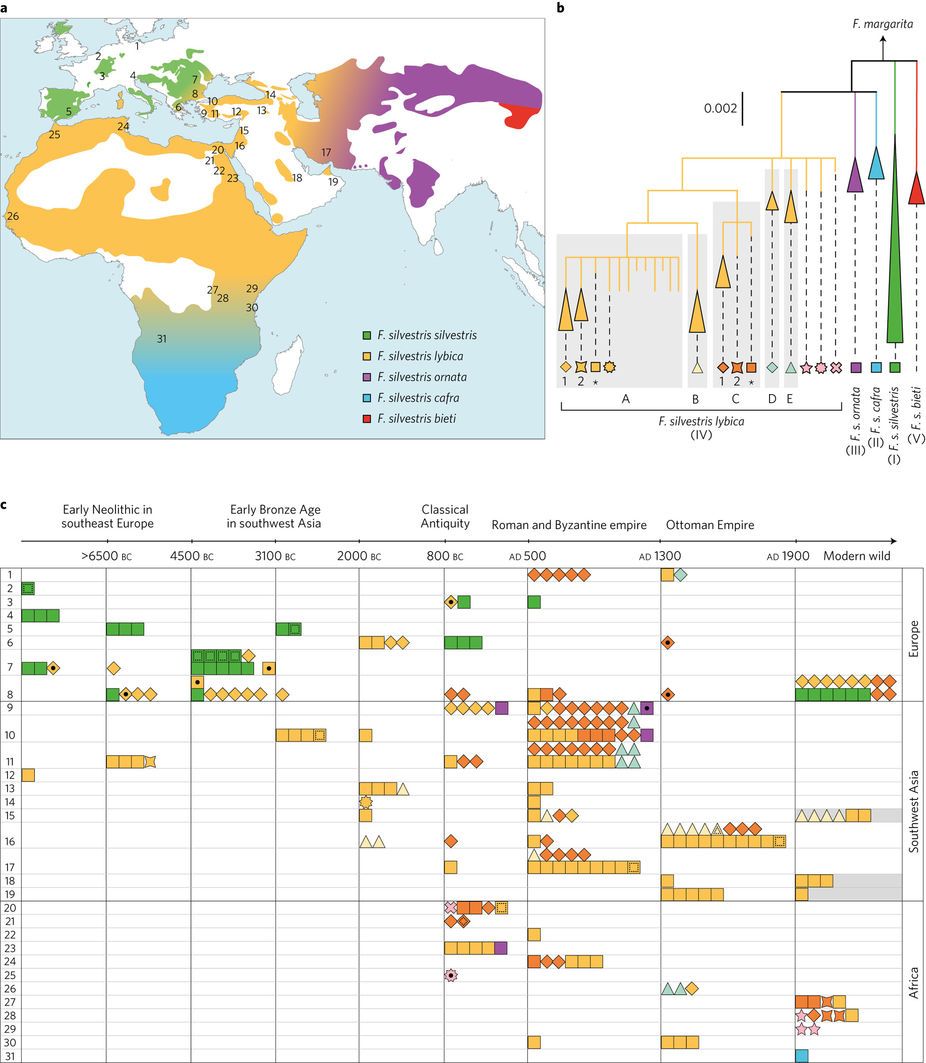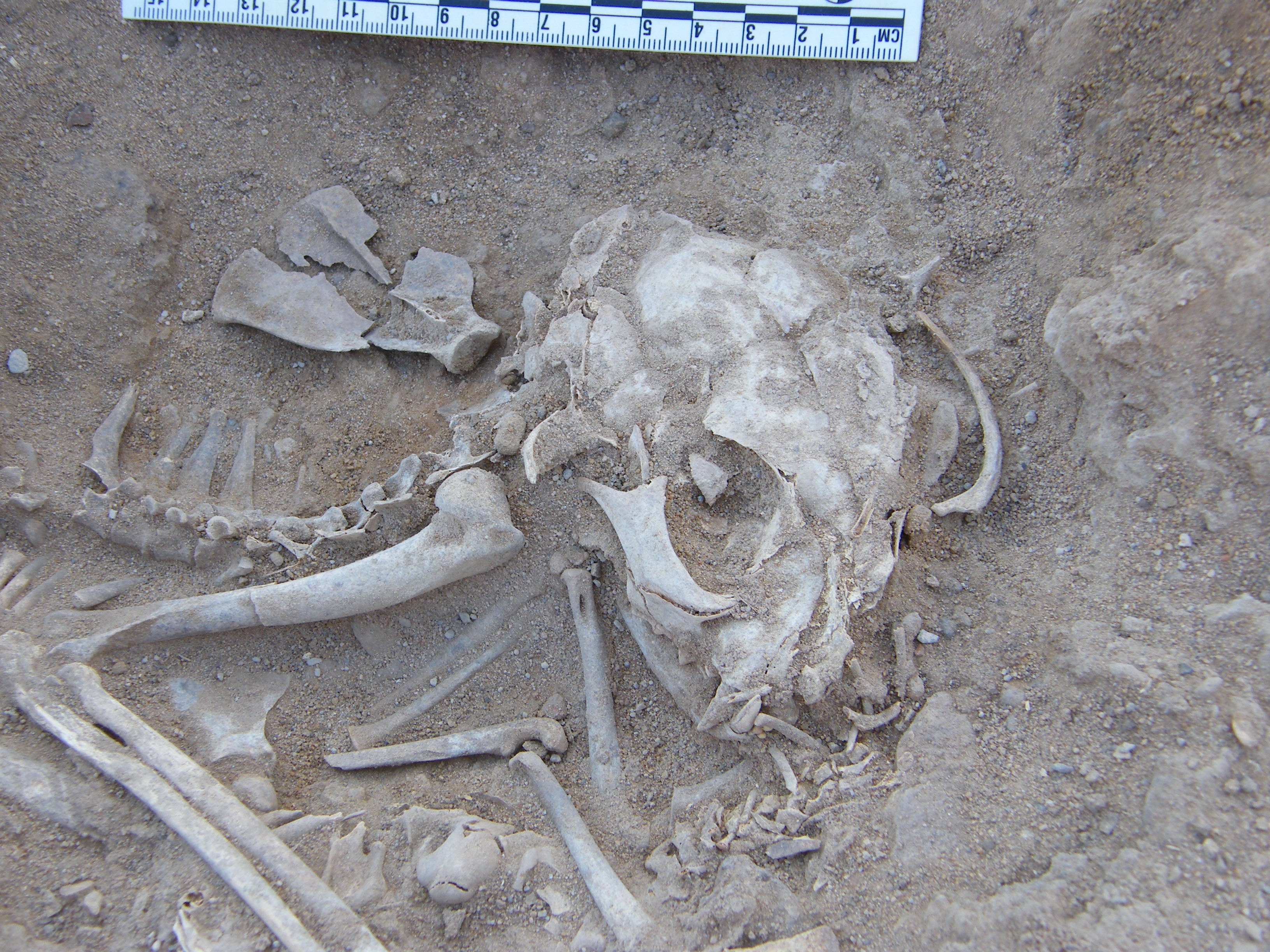 Genetic changes in cats were studied, including through the evolution of genes responsible for the specific color of “tabby” in two versions: tabby spotted and tabby mackerel. This photo shows a specimen of an animal with a color tabby mackerel.
Genetic changes in cats were studied, including through the evolution of genes responsible for the specific color of “tabby” in two versions: tabby spotted and tabby mackerel. This photo shows a specimen of an animal with a color tabby mackerel.People tamed cats more than 10,000 years ago, and they have long played an important role - they hunt for pests in the house, they are home companions for humans. At the same time, it is still little known how the taming of these animals occurred and how common they were in antiquity. A large international team of scientists conducted a large-scale
study , conducting DNA analysis of various feline remains from all regions of the world for 9000 years: from the Mesolithic to the 20th century.
Cats with coat color for the first time are often found only in the Middle Ages - this means that the directional breeding of cats began later than most other domestic animals. This is not the only interesting fact that distinguishes the cat from the rest.
Cats are present on all continents except Antarctica, so their evolutionary success is indisputable, scientists say.
Wild cats lived everywhere in the Old World. These are single predators that lack a horizontal social hierarchy. Such characteristics in no way attract to the domestication. In the end, people and cats lived for thousands of years before people had a significant impact on their breeding. There were five species of wild cats, depending on the habitat:
- Felis silvestris silvestris,
- Felis silvestris lybica,
- Felis silvestris ornata,
- Felis silvestris cafra,
- Felis silvestris bieti.

Modern genetic analysis of short tandem repeats and 16% of the mitochondrial DNA genome (mtDNA) in surviving wild and domestic cats revealed that only one of them, the North African / South-West Asian
Felis silvestris lybica , was eventually subjected to domestication.
Scientists have found that both the Middle Eastern and Egyptian populations of
Felis silvestris lybica at different times contributed to the genetic kit of the domestic cat. The domestic cat first appeared in the Neolithic period in the Middle East, and its dispersal around the world gained strength in the Classical period (V-IV centuries BC), when the Egyptian cat successfully spread throughout the Old World. Patterns of distribution and distance suggest that the distribution of the cat took place along human sea and terrestrial trade routes.
In our time, the cat is considered one of the most beloved companions in the Western world. But in ancient times, cats played a crucial role in killing rodents in villages and on ships. In addition to preventing economic losses, cats protected people from many dangerous diseases that spread through rodents. So the role of a domestic cat should not be underestimated.
Scientists have conducted a large genetic study to clarify the role of the two alleged centers where domestication of the cat occurred - Egypt and the Middle East, as well as the distribution areas of domestic cats in history.
 6,000-year-old grave at a cat's graveyard near Nechen, Egypt, where 3,679 cats are buried
6,000-year-old grave at a cat's graveyard near Nechen, Egypt, where 3,679 cats are buriedIt turned out that the domestication of cats did not happen at all like other human pets - dogs, horses, pigs, etc. The fact is that wild cats continued to exist and lived near human settlements after people had tamed the cat. So many years between them there was an exchange of genes. This explains the small genetic differences between a domestic cat and a wild cat. Unlike what can be observed, for example, with dogs.
In the same dogs, the physical constitution, temperament, and other characteristics have undergone drastic changes due to 30,000 years of human breeding. But the cats were almost identical to their wild relatives - both physically and genetically. Cats do not demonstrate other characteristics of domestic animals, such as the infantilization of facial features (infantilization is the behavior of adult individuals in the way that wild animals behave in the early postnatal period of development), reduced tooth size, understanding and obedience. Wild cats are not social animals, they are single predators, and domesticated cats are the same.
The scientific work was
published on June 19, 2017 in the journal
Nature Ecology & Evolution (doi: 10.1038 / s41559-017-0139).